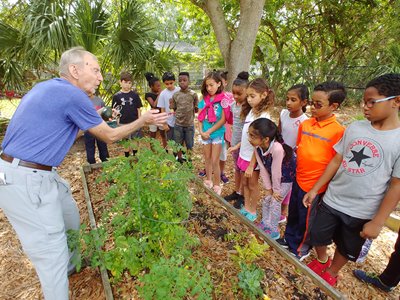Active Learning Opportunities
Incorporate physical activity before, during, and after the school day, as well as into daily lesson plans.
Read More Spring temperatures are warming up, and we’re about to take learning to the next level! Creating an outdoor classroom is a fun and imaginative way to engage students in learning about nature and the world around us. Educators have been using the outdoors to teach for years and the results clear – outdoor classrooms and learning spaces can improve student attention, cognitive ability and creativity, and have been shown to reduce stress and anxiety. Outdoor classrooms can take place in a traditional open playground, a designated area built on the black top or an indoor courtyard. Keep it simple and focus on the big picture of supporting students in being active in diverse learning environments.
Spring temperatures are warming up, and we’re about to take learning to the next level! Creating an outdoor classroom is a fun and imaginative way to engage students in learning about nature and the world around us. Educators have been using the outdoors to teach for years and the results clear – outdoor classrooms and learning spaces can improve student attention, cognitive ability and creativity, and have been shown to reduce stress and anxiety. Outdoor classrooms can take place in a traditional open playground, a designated area built on the black top or an indoor courtyard. Keep it simple and focus on the big picture of supporting students in being active in diverse learning environments.
Scout out some flexible space and get started with these simple and easy tips. Remember – safety and organization is key to allow for planned activities as well as free time for exploration.
Step 1: Determine a teaching or meeting location for your class to regularly connect.
Assess the chosen location to determine if any clean up is necessary for students to learn and move around safely. Check for debris and potential hazards, and consider other potential necessities such as shade, access to drinkable water, and emergency first aid materials.
Looking for some affordable seating solutions? Logs, boulders and wooden benches can provide simple, flexible and reusable seating options for students of all ages. Want to get even more creative? Dig out your paint set and brushes and allow students to create colorful designs on each seat.
Consider creating and hanging some student-led signage to let visitors know about the outdoor classroom and to identify the core values of the space. Grab some reclaimed wood and get to painting!
Step 2: Choose the focus of your outdoor classroom.
Dramatic play? Games? Math? Creative writing? Mindfulness? Science? These are just a few of the themes and units that teachers can focus on in an outdoor learning space. Be flexible enough to meet the needs of teachers and students, and connect it to the culture and values of the school community. Start with a few simple themes and build from there.
Step 3: Choose your learning materials, and secure a storage location.
Get innovative with fun manipulatives and equipment to provide a well-rounded experience. Here are a few suggestions to get you started:
The first step is to brainstorm what you need and come up with a clear and compelling list of what you’re asking parents and family members to help with.
Reach out to potential volunteers through your newsletter, website and social media, or email and call parents and families who you know might be interested. The wider your reach, the greater chance you have to meet all your needs.
Just ask! Often times, people are more than willing to volunteer but have never been asked.
Keep asking! Our world is saturated with competing priorities. There’s a chance your original message got lost in the mix.
Categories: Social-Emotional Health, At Home, At School, Digital Resource